How to build a Team Culture…
First up I will share with you where building a Team Culture fits within the Player-centred Coaching Philosophy/Approach…
Some key components of an Athlete-centred Approach: “…establishing a quality team culture (wairua).” (p.18 Athlete-centred Coaching by Lynn Kidman, 2005).
What is Culture…?
I will share with you various definitions of what Culture means in a sporting context…
From Wade Gilbert’s: Coaching Better Every Season (2017)
The section on p.18 sub-headed: “Creating a Winning Team Culture”:-
“Team Culture has been defined as a pattern of shared assumptions that guides behaviour.”
“Culture comprises both the obvious artefacts of the team… and the less obvious norms and rituals.”
“…the way we do things around here.”
I have been very fortunate to learn from Wade firsthand where I was able to listen to Wade present and share his knowledge, research and experiences about Team Culture on two occasions at Vern Gambetta’s GAIN IX and GAIN X at Rice University in the USA…
As you can see from one of his key slides at GAIN IX, Core Values are one of the 4 key things to build a Culture of Excellence.
Then at GAIN X Wade shared the key process that he writes about in his book Coaching Better Every Season. He splits the season into 4 parts and as you can see Vision, Core Values and Behaviour Standards are key parts of the Pre-season process.
Prior to GAIN X, during early June 2017 I read his book. As I was going through the book I was able to relate to many of the things and tips that Wade was sharing which affirmed I am on the right Coaching Philosophy path. I was also able to add a few more things to my Coaching Process to continue to reflect and refine what I do. Below I share the Four Es of the annual coaching process…
“Pre-season: Envision… Define what mattes and what’s possible this season” (Coaching Better Every Season by Wade Gilbert 2017, p.???)
This could be translated into “How do you want to be remembered…?” and/or “What is it going to take…?” and what goals for the season will be set.
Wade goes into great depths in each of the 4 sections of the book and I highly recommend that any coach of any level reads this book.
A key part, as you have seen in the information I have shared from the books I have read, of building a Team Culture is involving your players and empowering them to set the ‘Standards and Expectations’ where they then take ownership of these and police the behaviours within their team.
“…the vision must be mutually created or athletes must buy into an existing vision.” (p.21, Athlete-centred Coaching by Lynn Kidman, 2005)
From 2005 to 2008 this process was much more Coach driven because my players had never been through this process before and had never been in a Player-centred Coaching environment. I also didn’t use many videos during this time either. It wasn’t until after I had visited Nudgee College (the school that has produced the most Wallaby rugby players) in Brisbane, Australia for 2 weeks in July 2009 and then the Canterbury Crusaders (the most successful Super Rugby franchise in the history of the competition) for 3 weeks in August 2009 that I started to use videos every season and before every 1st XV match.
To help this facilitation from 2009 to 2013 I would have a wider 1st XV training squad for pre- season camps that would include U15 players all the way up to the 1st XV (U18) players. With the players moving up through the school you get to know and understand who the leaders are in the various teams as you walk around school, observe them in the Dining Hall, teach them in various lessons and coach them on the games field. This would mean that the future leaders of the 1st XV squad would have seen, experienced and observed on 3 occasions this Goal Setting process, therefore when it became their turn they knew exactly what to do and say at the right moment in time.
So for each season at the beginning of the process I would create a motivational video to show the players and inspire them to become the best that they could become…
Here are some of the key themes that I would have throughout each video which would either be videos, photos or text writing…
- Inspiration Video: e.g. Michael Jordan Nike video/NZ ABs All Blacks Haka;
- Bring the History to life… past team photos, year dates (i.e. the History and the Tradition);
- Music Track (to go with the theme/the message I wanted to give them that would connect deep down and whenever it would be played again it would bring the same emotions back to the forefront of their minds);
- The Badge (i.e. the Honour);
- The Jersey (i.e. the Pride);
- Team Huddle (i.e. that it’s about the team, #ForTheTeam)
- Tough physical exercise that they endured together (i.e. Challenge, Struggle, Critical point to turn to in a moment of need when the occasion saw fit);
- Something to connect to… relate to… refer back to… (i.e. a Shared experience);
- Match Action Photos and Videos (each player in the video so that everyone knew and understood they played a part);
- Text writing at the beginning, middle and end (e.g. How do you want to be remembered…?!).
2011 1st XV Case Study
To share with you the level of trust and feeling we got to with this process during my 8 years at Denstone College I share the case study of the 2011 1st XV Goal Setting process…
So having been with these players for 7 years since they joined the school aged 11, being their boarding tutor for their first 3 years in the school, taking them to the U14 International Rugby Festival at Disneyland Paris for a week, then taking them on the 2010 3 week 1st XV Rugby tour to South Africa, for the 2011 1st XV season I just clicked “play” on the Goal Setting Motivational video, walked out the room, stood by the open window and listened to the players with my assistant coach while they discussed their goals for the season ahead and what it was going to take for them to achieve their goals. Once they had finished their conversations I walked back into the room, asked them a few questions, clarified what a few of the key points meant and lastly asked them does anyone want to change something or disagree with anything on the noticeboard (notes that the players themselves had written). I then asked the captain (who hadn’t been announced yet but we the coaches knew who it was going to be as he was the first person who spoke after the video had finished) to come forward and sign on the noticeboard on behalf of all the players. I would then sign on the noticeboard on behalf of the coaching team. I would then type up the players’ notes into Publisher, print one off for each player in the 1st XV squad, get the 1st XV Captain to sign the bottom right hand corner of each one, I would sign the bottom left hand corner of each one and then I would laminate them all to give to the whole squad.
“It is therefore clear that the development of the team culture takes time and that the rate of progress through the distinct phases will depend on how all the personnel involved in the team, including the coach staff, management and the players interact.” (p.19 Athelte-centred Coaching by Lynn Kidman, 2005)
“If the athletes themselves develop the vision, values and expectations, they take ownership of them, live by them, take responsibility for monitoring each other.” (p.21, Athlete-centred Coaching by Lynn Kidman, 2005)
Then when Wade Gilbert was asking for examples on the GAIN Forum to include in his book that he was writing, I shared my experience with him and he included it in his book…
Below I share some of the music and words that I would include in the video…
2009
What will it take… …to be the best that you can be… …to do what no other Denstone team has done in the last 40 years… …to be a part of a special team…
This 1st XV team become the first unbeaten 1st XV since 1966 so the first time in 43 years.
2010
…so are you ready to become a part of HISTORY… …with a VERY Stylish Attack… …with WORLD CLASS Lineouts… …with a POWERFUL Scrum… …and a VERY SOLID Defence…
…so what will it take… …to be the BEST that you can be… …and become part of a VERY SPECIAL team… …and do what no other 1st XV has ever done before… …2010…?
This 1st XV team lost one game by one point against our arch rivals Ellesmere College.
To put this in perspective and the turn around in performance because of the change in culture I had created… in 2005 we lost to Ellesmere College 48-3 in my first season at the helm.
2011
Music: World in Union (Hayley Westenra)
So are you ready to begin the Crusade…
…so what will be your place in HISTORY???
…and just think what we have been through together… Music: Never Forget (Take That)
…so what will it take in 2011/12 ??? Music: So Strong (Rock Choir)
Ian McGeechan 2009 Lions 3rd Test “We can leave a LEGACY”
…2011/12 ???
This 1st XV team became only the 5th unbeaten 1st XV, the 2nd in 3 years, in the history of the College dating back to 1899 beating the likes of Kirkham GS and Bromsgrove School… 61% of the squad had joined the school in 1st form/Year 7 and 28% of the squad had never played rugby before they joined the school.
2012
Michael Jordan Nike Advert: Maybe it’s my fault… maybe you’re just making excuses…
…so are you ready to take your place in HISTORY… History Photos, Music: Chariots of Fire soundtrack
…and continue the TRADITION of the 1st XV… 1st XV Team Photos (New and Old) and Huddles, Players (Role Models), Success, Music: The Garden intro tune… (Take That)
…and just think what you have been through together… Adventure Climbing Photos from pre- season camp, Music: The Climb (Miley Cirus)
…so what will it take… Match action Photos and Videos, Music: Hold on to the dream… (Sean Paul)
…so how do you want to be remembered… …2012 ???
This 1st XV had a winning season and beat the U18 Daily Mail Cup runners-up Northampton School for Boys with a drop goal in the last minute of the match in the final game of the season.
The motivational videos, the action videos and still photos, the music and the words you will include in your Motivational and Goal Setting videos will be highly individualised and unique to your environment, your team, your situation, your imagination, your style, your personality, your players…
To share a personal example, which highlights the importance of doing this process 100% to the letter of the law and the difference between winning and losing in very tight games, in the season where we did this process but I didn’t create the laminated poster signed by myself and the Captain of the team, our goal kicker missed a penalty kick at goal by an inch to the right of right hand goalpost and we subsequently lost that game 12-11. This was the only loss in 3 seasons and we would have therefore had 3 unbeaten season in a row, something that has never been achieved in the history of the College dating back to 1899, and probably never will be in the future. I therefore will always look back and reflect on that season and ask myself was that the reason… was it the fact that the players couldn’t read their poster everyday in their bedrooms…?!
Denstone College 1st XV Rituals
I now share some of the Rituals that played it’s part in developing our quality team culture…
First up, I would take the 1st XV on a pre-season training camp for 5 days at the end of the summer holidays which would be a wider training squad including players from the U15s all the way up to the 1st XV. Here the younger players would live, breath and see how the older players behaved, trained, played and what it took to become the best that you can become.
The beginning of the pre-season camp would involve team building exercises and physical exertion that would take the players to a place they have never been or experienced.
In the photo would be our injured players, the photographer, the video cameraman and the water boy that were all made to feel just as important as the players in the victory and a part of the whole team as they played significant roles behind the scenes during each match.
Pride in the Jersey and the Badge of the school was another significant aspect of developing our Team Culture…
Ensuring the players became the best that they could be and give their all #ForTheTeam.
Bringing the History of the Rugby in the College to life was a very influential part in the process…
(Something I took from my time spent at Nudgee College in Brisbane for 2 weeks in July 2009 and at the Canterbury Crusaders in Christchurch, NZ for 3 weeks in August 2009)
…by using different photos each time in the 1st XV pre-match Motivational videos before every game. The actual viewing of the video became a Ritual in itself as well and it was something the players were really excited to see what the next instalment would be like and whether they would actually appear in the video.
Having a team huddle before every game…
…to recognise everything that they had done for the team and given in the jersey. The younger players would be around being able to see this photo and what it signified and meant. With them wishing that they get their photo when their time came.
Comparing overall stats…
|
Years |
2005 to 2008 |
2009 to 2012 |
|
TEAM CULTURE |
NO |
YES |
|
Matches Played |
53 |
43 |
|
Matches Won |
19 |
35 |
|
Matches Drawn |
1 |
3 |
|
Matches Lost |
33 |
5 |
|
Points Scored For |
830 |
1201 |
|
Points Scored Against |
1179 |
361 |
|
Points Difference |
-349 |
+840 |
|
Tries Scored For |
130 |
171 |
|
Tries Scored Conceded |
181 |
46 |
|
Tries Scored Difference |
-51 |
+126 |
|
Win % |
36% |
81% |
I share my Denstone College journey here on my website… http://nickhillcoaching.com/?page_id=56
Lessons from “You Win in the Locker Room First: The 7 C’s to Build a Winning Team in Business, Sports, and Life” by Jon Gordon and Mike Smith
“Know What You Stand For: If you are looking to build a new culture or transform the one you have, the first questions you should ask yourself are, “What do we stand for?” and “What do we want to be known for?”…When you know what you stand for you can find the right people who stand for the same things as you.” (p.10)
“Process and Milestones: …the best way to do this was not to focus on a season’s outcome, but instead use a practice-to-practice, game-to-game process. My intention from the beginning was not to focus on goals, but on preparation and milestones. After all, every team in the league has the same goals…” (p.13) i.e. to win the Superbowl
What does the research say on building great cultures within teams…?
Being a member of the International Sports Coaching Journal I have access to some great research articles on Culture. Then being a member in Vern Gambetta’s GAIN (Gambetta Athlete Improvement Network) Professional Network I have been able to learn from, connect with, and share articles on Culture with Wade Gilbert, Professor of Sports Coaching and Psychology at Fresno State University in California and GAIN Faculty Member. Plus Xavier Roy from Montreal, Canada, who is a GAIN member, who is currently working on his PhD and so has access to all the journals. So if I see a link or photo on Twitter, or read a research article and I want to read one of the referenced articles, I message him and he sends me over the articles I am seeking.
Here I share some findings from an excellent article on building Team Culture…
A Core Value of Pride in Winning: The All Blacks Team Culture & Legacy (Tom Johnson et al., 2013)
…the importance of the pursuit of excellence.
It is the sustainability of successes in sport that is difficult to maintain because success generates complacency which generates a downfall.
• Pride in Winning (From the amateur era passed on down to each new generation, it’s their National sport so there’s a fear of letting their country down more than anything, there’s a fear of losing which is more than the importance of winning);
• Pride in the Legacy (The importance of history, it’s a vital role in shaping New Zealand’s identity, the goal has always been performance enhancement and creating a competitive advantage, leaving the jersey in a better place, creating ‘Club All Black’ which takes them back to their rugby playing roots and keeps them grounded);
• Embracing Change (The importance of innovation and change when necessary, they keep developing, it’s evolution rather than revolution, new ideas are readily accepted).
The learning leadership was an admission they didn’t know everything and the commitment to a learning culture was to maximise the use of the collective knowledge of their key players. This learning focus requires ruthless honesty in self-appraisal and reflections on performance. It also requires acute perceptions and sound analytical skills to be able to see small variations to game plan and tactics which will give the team a winning advantage.
Taken from Lynn Kidman’s Athlete-centred Coaching: Developing Decision Makers 2nd Edition (2010) pp. 126-134
- Team Vision (i.e. a clear vision, Mutually agreed team goals);
- Shared Values and Behaviours (Undertaken collectively, Wholly inclusive, Show team identity, Brand the Culture, Formal and Informal activities);
- Clear Roles and Responsibilities (Formal and Informal roles, Accept your role);
- Team Cohesion (i.e. the dynamic process of bringing a team closer together from both task and social perspectives is essential in developing a quality team culture, Team Norms: expected standards of behaviour);
- Respect and Integrity (i.e. treat athletes with respect and develop a meaningful rapport and trust with them. This process is crucial to establish and maintain an accomplished reciprocal relationship based on integrity.);
- Effective Communication (i.e. a way to prevent issues arising and a way to solve those that do arise within a team. Open and honest channel based on support and empathy is crucial for an effective team culture to prevail and flourish, Regular team meetings);
- Social Support (i.e. an athlete of selflessness and an appreciation that the team is bigger than any individual, Look out for each other).
Lead by example from the front…
The Captain of the New Zealand All Blacks is the Waterboy during a Test Match…
…with over 100 International Caps to his name, and the most experienced player in the squad… no job is beneath him as he leads by example supporting his teammates on the field.
You Win in the Locker Room First: The 7 C’s to Build a Winning Team in Business, Sports and Life (Jon Gordon and Mike Smith)
“Culture Contamination:
Leaders often ask me how long it takes to change a culture. My answer is, the more aligned everyone is, the less time it takes. If everyone buys into your vision, purpose, and belief system, culture change can happen very quickly. If you have energy vampires on your team, the process will take longer-and you probably won’t be able to completely change your culture until they change or leave. The quicker you transform or remove the vampires from your team, the faster it takes to transform your culture. The longer you allow people from your old culture to contaminate your new culture, the longer it takes to change and build a team. If you want to build a winning team, you have to make sure everyone is all-in and you can’t allow negative people from your old culture to impact the new mindset you are trying to build. The last thing you want is for negative veterans to contaminate positive rookies. This goes for sports, businesses, and schools(p. 140 and 141, Beyond the 7 C’s)”
Energy Sappers
Sir Clive Woodward, former Head Coach of the England Rugby team, would call these types of people “Energy Sappers” and he removed them from the squad because they would have derailed the team dynamics and stopped them becoming the first, and only, Northern Hemisphere rugby team to win the Rugby World Cup in 2003.
“The standard you walk past… is the standard you become… Do not let standards drop. Grey kills you. Must have Black & White discipline standards/procedures.” (Ben Ryan, Fiji 7s Gold Medal winning coach 2016 Rio Olympic Games)
Feel free to get in touch with me with questions you’d like answering or a particular topic you’d like to know more about…
I plan to write a weekly article every Sunday evening…
If I don’t receive any recommendations during each week then I’ll pick a topic or an experience to write about to share with you that I hope will help you on your Coaching Journey as one person teachers, two people learn…


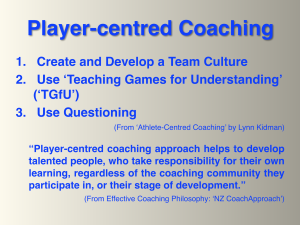
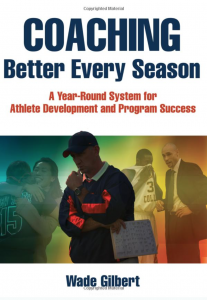


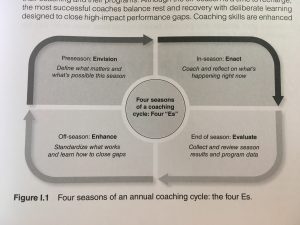
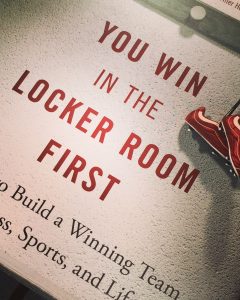

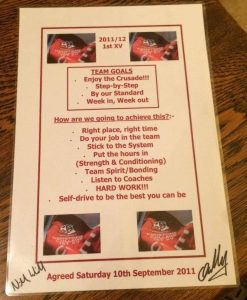
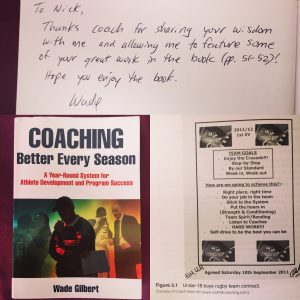
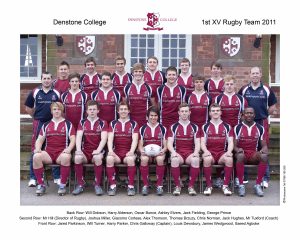



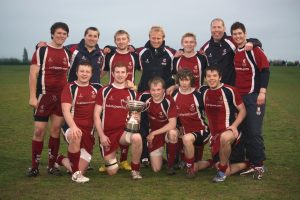
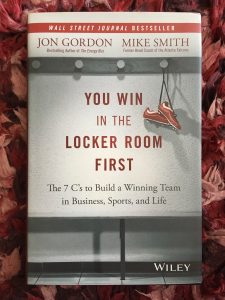
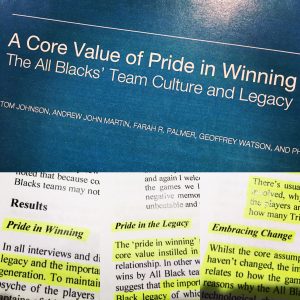
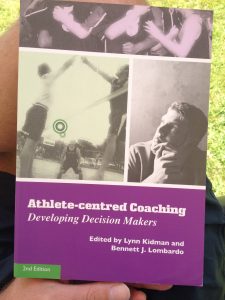
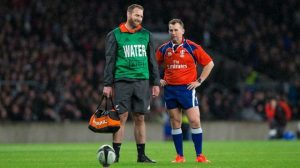
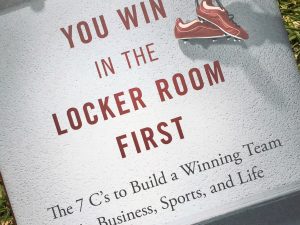
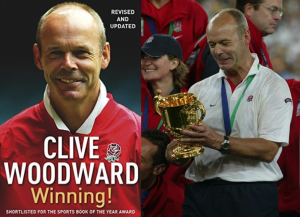
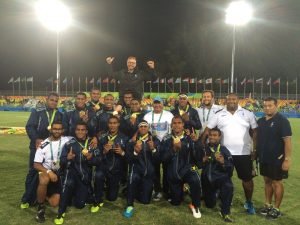
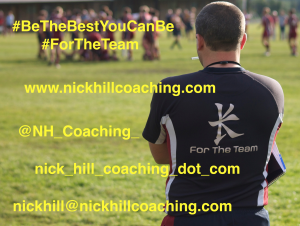
One thought on “HOW Player-centred Coaching… i”